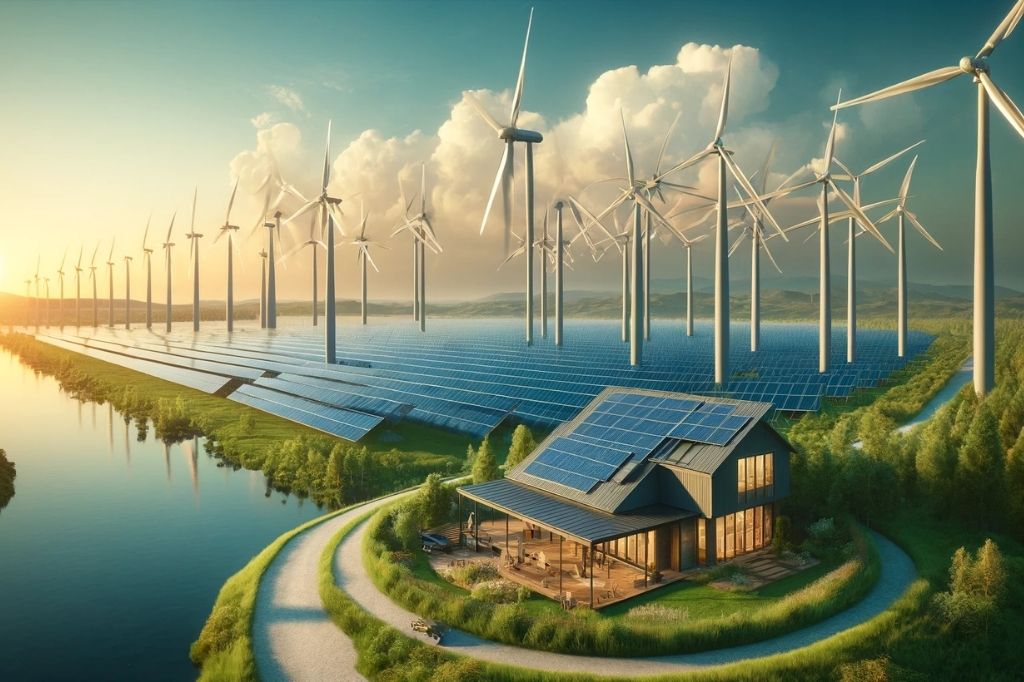When it comes to energy sources, “non-renewable energy” is perhaps one of the most discussed topics. Resources such as oil, coal and natural gas occupy an important place in almost every aspect of our life, from industry to transportation. But there is also another side to the business. So, have you really thought: ‘Does Non-Renewable Energy Have Cost And Benefits’? Do the advantages of these energy sources outweigh, or are their costs? Come on, let’s take this issue in a sincere way and clarify it a little for you.
What is Non-Renewable Energy and Why Is It Still Being Used?
Non-renewable energy, in its name, refers to energy sources that are present in nature in limited quantities and cannot renew themselves after consumption. Coal, oil and natural gas fall into this group. It is still used because it provides fast energy production and our existing energy infrastructure relies on these resources. Moreover, its technology is already installed, a system with the ease of “push the button and start”.
But this convenience has a price. Firstly, the extraction of these resources seriously destroys nature. Forests are destroyed, soils are polluted and water resources are depleted. There are also carbon emissions, of course. These energy sources are one of the main responsible for climate change.
On the other hand, non-renewable energy sources may seem economically attractive. A large amount of energy can be produced at low costs. But this cost turns into environmental and social problems in the future. So, is it really cheap? Here, the answer to this question is more complicated than we thought.
Advantages of Non-renewable Energy: Convenience and Power
Now let’s look at the good parts of the job. The biggest advantage of non-renewable energy sources is their high energy density. A large amount of energy can be produced in small quantities. This is indispensable, especially for the industrial and transportation sectors. Imagine, you can travel hundreds of kilometers with a liter of oil!

Another advantage is the existing infrastructure. Currently, a large part of the energy production facilities in the world are based on coal, oil and natural gas. Changing this infrastructure takes both time and is quite costly. Therefore, it seems that dependence on non-renewable energy sources will continue in the short term.
In addition, these energy sources provide continuity in energy production. It does not depend on weather conditions such as sun or wind. It can be used anytime, anywhere. This is what makes us see them as a “quick fix”. But how sustainable is this solution in the long run?
Costs: Environmental and Social Costs
Yes, non-renewable energy sources may seem economical in the short term, but the environmental costs of the business are much greater than we thought. For example, drilling to extract oil destroys marine ecosystems. Coal mining, on the other hand, pollutes the soil and air. These processes cause serious damage to both nature and human health.
Carbon emissions are another dimension of the job. The use of non-renewable energy sources increases the rate of greenhouse gases in the atmosphere, which accelerates climate change. Hurricanes, droughts and forest fires, which are more frequent, are direct consequences of this process. The economic cost of these disasters can reach trillions of dollars.
Finally, the limited availability of these energy sources causes their prices to fluctuate. An increase in oil prices can lead to both inter-country crises and burn the pockets of consumers. In other words, non-renewable energy can leave both nature and the economy in a difficult situation at the same time.
Alternatives: The Rise of Renewable Energy
You may ask why non-renewable energy sources are still being used when their costs are so high. This is where renewable energy sources come into play. Options such as solar, wind, hydroelectric and geothermal energy offer a cleaner and more sustainable energy future.
Renewable energy sources reduce carbon emissions and minimize environmental damage. Also, these resources are unlimited. The sun rises every day, the wind blows all the time. This makes them more economically and environmentally advantageous in the long run.

However, the transition to renewable energy is not an easy process. It requires infrastructure investments, technological developments and political support. But these challenges are steps that need to be taken for a greener future. Because non-renewable energy sources cannot be sustained forever.
Is Non-Renewable Energy Really Worth It?
The answer to the question ‘Does Non-Renewable Energy Have Cost And Benefits’ is both yes and no. These energy sources may offer economical and practical solutions in the short term, but their environmental and social costs are much higher in the long term.
Is it my idea? We can continue to use non-renewable energy sources, but we also need to accelerate the transition to renewable energy. It is time to take steps for a cleaner, more sustainable world now. Remember, our energy resources shape our future. Which source we choose determines what kind of world we want to leave.